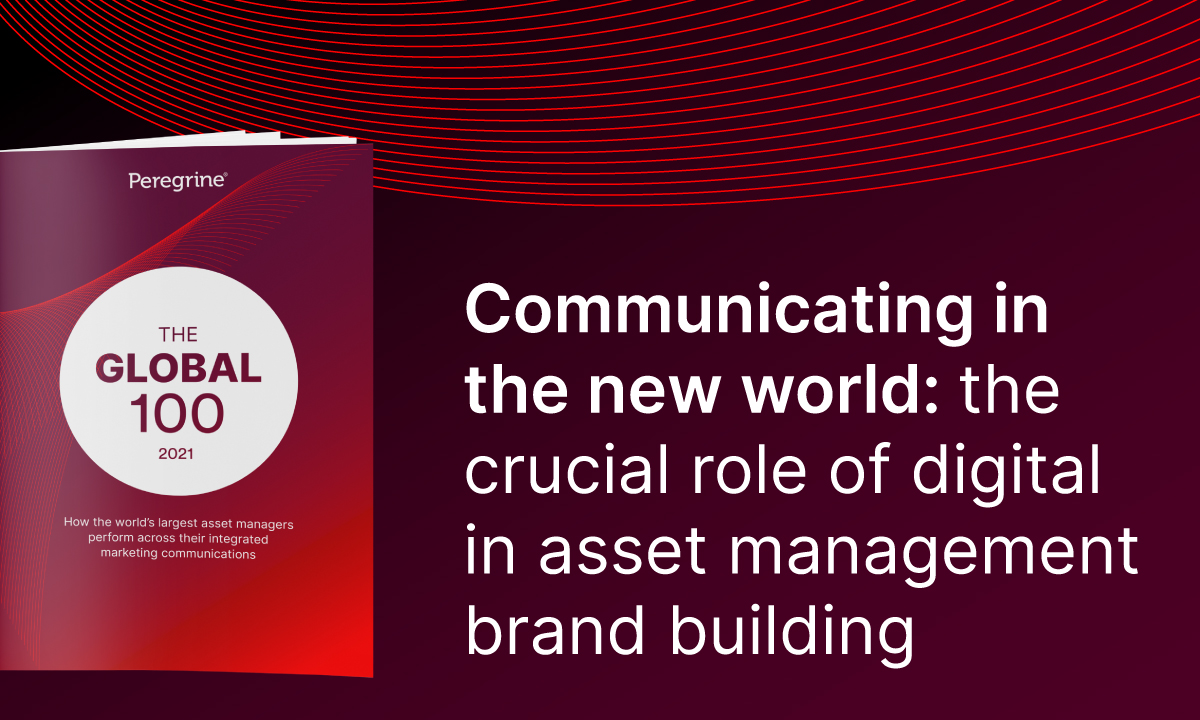In our annual Global 100 study, assessing the integrated marketing communications performances of the world’s 100 largest asset managers measured by AUM, we sought to understand how their social media fared amid another year where the news agenda was dominated by the COVID-19 pandemic.
Last year, when worldwide lockdowns began and firms began to seek new ways to reach clients, prospects, employees and potential recruits alike, there was a clear rush to “go online”. Yet the concomitant increase in the amount of content being created by asset managers actually led to a significant decrease in online engagement from their audiences, our 2020 study revealed. LinkedIn engagement in 2020 was just a fraction (26%) in comparison to 2019.
This year’s study, however, showed an encouraging bounce back in online engagement. Each of the top 100 asset management firms was given a social media score, by assessing the reach, engagement, and content quality across three core channels; LinkedIn, Twitter and YouTube. While the events of 2020 disrupted carefully constructed marketing plans, a year later it seemed firms had adapted to the demands of social media platforms and developed more effective online strategies.
On LinkedIn, the primary social media platform for asset managers, we found a 170% increase in average engagement. This dramatic surge highlights that many firms acknowledged the need for more thoughtful content in 2021, and those who achieved high scores in our study also began using a blend of content formats, including videos, podcasts, webinars, virtual events and animated banners – a far cry from the COVID content overload that plagued 2020.
After numerous cancelled events in 2020, 2021 saw firms better equipped to host events online and utilise platforms such as YouTube to share recordings. This is reflected in our findings which showed a large jump in the number of firms leveraging YouTube with 10% more firms using the channel in 2021 than in 2020.
Video content, which on average earns three times more engagement than text posts on social media, has been a crucial component for asset managers looking to keep investors engaged. In this year’s study, we highlighted Schroders’ Beyond Profit campaign as an effective example of building brand awareness on a global scale. Split into a series of short videos which were posted across all Schroders’ social media platforms, this campaign used the tagline ‘all profits are not created equal’ to promote their sustainable investment offering. Schroders scored 10 in our brand awareness metric for a second year in a row and 8 for social media, highlighting the impact of embracing video content and a multi-platform approach in combating the declining brand awareness experienced across the wider industry.
“The managers who achieved high social media scores have embraced a multi-platform approach for reaching their audience, with innovative content formats to keep investors and talent engaged, especially when they are unable to meet in person.”
Alex Layzell-Payne, Senior Digital Account Director
Although our study showed a promising rise in engagement and a clear upward trend of online awareness, it also revealed that, for the third year in a row, almost half of asset managers are still not using social media effectively. In fact, 47% of the managers we studied had a Social Media score of 5 or below. Even large firms such as Apollo Global Management, Goldman Sachs Asset Management, Neuberger Berman and Credit Suisse Asset Management scored relatively poorly. This shows that larger AUM – and presumably a larger budget – does not always translate into digital effectiveness. Clearly digital is still not considered a priority by some asset management firms.
Even as the impact of COVID-19 begins to recede, digital communication offers valuable tools. For asset managers digital will continue to offer cost effective ways to build brand awareness in key markets, bolster in-person activities and connect with their global network of stakeholders.


